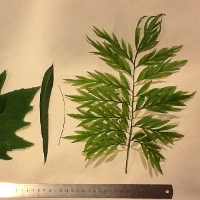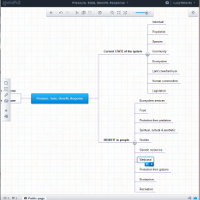Guest post by Lucy Tallents & Jocelyne Hughes
The SHOAL portal will go live in March, following a beta-testing phase in February (to participate in the trial, email shoal@maillist.ox.ac.uk). As the release date approaches, we will blog about specific learning activities that feature in the portal, organised into themes such as collaboration, feedback, and support for tutorial-based learning.
In this post, we focus on the use of embedded websites to promote collaboration and the exchange of ideas and information between students.
Collaborative data collection

Problem: On her ‘Exploring data with R’ online course, Lucy Tallents wanted to create a place where students could collaborate to build a simple ecological dataset, which they would use to help them discuss statistical theory and applications.
Solution: After designing a data collection protocol suitable for everyone (measuring five tree leaves collected near their home), Lucy created a Google doc for students to enter the leaf morphology data, and embedded the Google doc within a WebLearn Lessons page. The instructions for field work, data repository, discussion forum and computer exercises on data analysis are seamlessly connected using the Lessons tool. https://weblearn.ox.ac.uk/portal/site/:central:it:shoal:leaf-morphol
Adapt this idea: In a face-to-face situation, students could collect data in a field or laboratory practical, or during library research. After collating data on Weblearn, students can analyse and discuss in their own time. Another approach would be to instruct the students via Weblearn how to collect the data in their own time, and upload it to a Google doc ready for a classroom session on analysis or interpretation.
Jointly-edited mind maps

Problem: On a different course, Lucy wanted to encourage students to use mind-mapping to clarify their understanding of wildlife conservation issues. Mind-mapping software is freely available, but Lucy’s aim was for students to collaborate in creating a mind map together, so that they could learn from each other’s diverse professional experiences.
Solution: Lucy created a skeleton mind map on Mind42 [www.mind42.com], and added students as collaborators there, which automatically sent them an email inviting them to edit the mind map. She linked to the Mind42 website within the Lessons tool, from a page which presented the theory and explained the task in more detail. Students edit the mind map themselves, adding their own ideas and comments, and working towards a consensus on how different conservation drivers and threats are related. https://weblearn.ox.ac.uk/portal/site/:central:it:shoal:mindmap
Adapt this idea: Collaborative mind-mapping can very successfully be used in face-to-face teaching to encourage a more holistic and connected view of a topic, and as a revision aid. Students can work in small groups or as an entire class, highlighting connections and revealing knowledge gaps. Another use is to bring together ideas presented in a whole module where lectures are provided by a number of different teachers. A collective mind map can be created by students to unite the themes presented by diverse staff during the term.